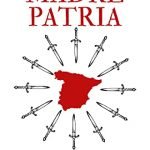
Contents
Pirate flag, terror on the seas
The pirates’ symbol of terror was their flag. Panic seized the crews. Surrender or a fight to death, body to body, bloody and merciless.
The so-called typical pirate flag, terror of the seas, has a long history of more than 2,000 years.
Although usually black, the decoration could vary and it was reminiscent of death.
The appearance of the dreaded pirate flag could turn a pleasant voyage into a nightmare, where everything was at stake, even your life.
Red or black pirate flags
If it was black, a warning
First they used threat and terror, until the ship stopped sailing and they could reach and board it. But if this did not work, or it took too long, then they resorted to cruel violence.
If it was red, life and death struggle
When the pirates raised the red flag, that ship would most likely not be able to avoid a life and death struggle. Disobeying the pirates’ orders meant that they would steal anyway, but probably leave no one alive.
The dreaded pirate flag often created panic.

It was the most popular flag of the Filibusteros, known as Jolly Roger.
Previously belonged to the Corsairs, taken from the time of the Masons, heirs of the Templars, who in turn, took it from the tradition of the cult of the dead of Palestine.
Flags: Black or red
Decorated with skulls, bones, shields …
The black or red flags hoisted by pirates and other sea raiding forces, such as corsairs, buccaneers, filibusters, etc., were to announce that they neither gave nor expected any quarter.
They only offered a choice between two possibilities: surrender or death.
Flags: Jolie rouge or Jolly roger
Corsairs also used to carry the insignia of their country.
Etymologically and knowing that the first pirates were French in the Antilles, it is very possible that the meaning was blood color (in French jolie rouge) but due to the later arrival of numerous Englishmen it degenerated into (English jolly roger), which is how their flags ended up being called.
The flags of the privateer also used to carry some shield or insignia representative of their country. In some cases, if they had participated in some notorious event, they reflected it on the flag.
However, it is believed that it was used for the first time in the 1130’s when Rogelio II reigned in Sicily. Descendant of French Normans and closely linked to the Knights Templar.
They instilled terror with skulls, skeletons …
They provoked a terrible fear in their victims
To the red or black cloth of the flags were the colors to which were added symbols related to death and terror, such as skulls, skeletons, knives etc.. Reminding them that there would be no mercy if they did not surrender in time. Their lack of scruples has made them associate ship and pirate as something dangerous.
The message they conveyed was to remind them of the future of cruelty and death that awaited them if they did not surrender in time, and did not agree to their demands.
The Pirate Flag has a long history of 2,000 years that began in Palestine.
A more common symbol of the Corsairs, Pirates, Buccaneers and Filibusters, was their pirate flag in red or black with bones or skeleton.
This flag was copied by pirates to send a clear and effective message of threat, violence and death.
History of the Pirate Flag
The Pirate Flag has a long history
It began 2,000 years ago in Palestine.
A more common symbol of the Corsairs, Pirates, Buccaneers and Filibusters, was their pirate flag in red or black with bones or skeleton.
This flag was copied by pirates to send a clear and effective message of threat, violence and death.
Jews and Palestine
In the time of Jesus Christ and before, the deceased was buried wrapped in a cloth, previously cleaned and sometimes impregnated with oils.
The body was left for some years, until the flesh disappeared and the bones and the skull remained clean.
Then they were placed in a small ossuary or urn. As the longest bones of the body, the femur, did not fit, they were crossed one with the other. And finally the skull was placed on top.
The Templars
The Templars had as a model Saint John the Baptist, who lived during the time of Jesus Christ. This saint was beheaded by the Jewish King Herod, fed up with his words. The skull and bones of the saint were preserved.
The Knights Templar used this image of the bones and the skull as a death cult. They took it during their time in Palestine as commonplace in the form of burials and the remembrance of death.
At that time piracy against the infidels was not condemned. For this reason they had fleets that plundered the coasts of the Turkish Empire, obtaining wealth and slaves, and it was considered a lawful activity.
After the capture by the Turks of the main Templar base in the Eastern Mediterranean Sea, the Island of Rhodes in 1522, they moved more towards the Western Mediterranean.
The Emperor Charles I of Spain granted them the Island of Malta and some other small islands such as Gozo or Comino.
They became known as the Order of Malta and continued with their piracy activities against the infidels, blessed by the Church of Rome.
The symbols of the Knights Templar continued with them. In the sepulchres of the Order appear the skull and crossbones.
The Freemasons
The King of France, fearful of their enormous power and heavily indebted to them, began his accusations against them.
After the burning of the Grand Master of the order in 1307, numerous Knights Templar were arrested and burned. In 1312 the Pope, under pressure from the King of France, decreed the expulsion and dispersion of the Knights Templar.
But these Knights Templar were very well educated people with a great amount of goods. It is said that a fleet of 7 ships of the Temple left France and their ships were dispensed all over the world.
Some of these ships took revenge for their expulsion from France by engaging in Piracy against their King. And they put on their red or black flag the Skull and Bones.
These settled under other names. in Scotland and in Portugal they took the name of Order of Christ. These led the age of discovery throughout the world. Under this name the Portuguese Knights Templar continued until the 18th century. Actually until 1780 when it was secularized.
Great Portuguese navigators and discoverers belonged to this order, such as Vasco de Gama or Ferdinand Magellan.
There are inscriptions of Templar symbols in places as far away as Goa in India. When the Portuguese left India, they left a legacy of buildings in which Templar symbols can be found, such as their characteristic cross. On silver ingots recovered from shipwrecks at the bottom of the sea, their symbols also appear.
The Masons were heirs to many of the Templar practices and incorporated them into their rituals. And their symbols of Skull and Bones can be seen in their ceremonies,
The Corsairs
Some French corsairs, land of the Knights Templar, began to use these symbols of Masons and Templars.
Its appearance in its current version is only 300 years old. It was not until the year 1700 when an English account is written about the flag of a famous French privateer who attacked English ships.
On its masts could be seen hoisted that red flag with the skull and crossbones. In the War of the Spanish Succession the flags began to appear on French privateer ships attacking the English.
The Filibusters
The pirates thought it was a good symbol to frighten their victims, announcing their possible immediate future if they did not stop their ship and agreed to their demands.
Curiously, the pirates, mainly English, took this flag, appropriating it to such an extent, that until now it was considered theirs. And with them it has become a worldwide symbol of Piracy, it became popular with the emergence of cinema.
A visual message that created terror on merchant ships. These had difficulty defending themselves, since they were usually few sailors and without sufficient resources to face cruel and experienced fighters.


